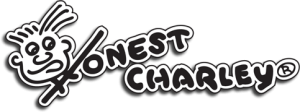Street Rodder Road Tour–Lead Work
Throughout the metal working process of the Street Rodder Road Tour ’51 Ford, we wanted to experiment with using lead for a filler on some of our seams and body modifications. We wanted to get the true essence of a “lead sled” so we got a lead kit from Eastwood Tools, and started working. They provide a DVD with their kit that gives great tips for the proper adhesion to the metal, so that was a great way to start the process. Keep reading to see all of the places we used lead on the Road Tour car!

We used lead to fill seams, such as the seam on the peak of the quarter panels. This was originally covered with a piece of trim, and it was basically a pinch-weld, where two panels were joined. We filled it with lead, and gave it a slight peak when we filed it down.

We also used lead on the roof, from our top chop. Here, you can see the welded seam has been treated with tinning butter, which purifies the metal before laying the lead.

The Eastwood kit came with a small container of Tinning Butter, along with all of the other supplies needed, including lead bars.

The Eastwood Tinning Butter is applied with a small brush, and heated with a torch to burn into the metal.

The leading process continues with fine steel wool, to work the butter into the metal. This is then followed up with a baking soda mixture to clean the surface.

The panel is heated with a torch, and the lead bar is then heated until its melting point. There is a very fine line between the lead being too hot or too cold.

This is what the lead looks like when it is being applied. It looks crude, but it quickly gets filed off to a much nicer finish.

Richard and Delton also applied lead to the seam down the center of the hood. This area had a piece of stainless steel trim, and an indention that ran on the topside of the hood.

Richard and Delton worked together to make the leading process much easier. One man can do it, but if you have two sets of hands, you can concentrate more on making sure all of the steps are taken properly. The wooden paddle in Richard’s hand is another piece from the Eastwood kit that helps spread the lead.



